Shavasana, Savasana or Corpse Pose is an asana where Shava – Corpse; Asana – Pose; and Pronounced as – Shuh-vah-sana; Sanskrit: शवासन
Here, we will be discussing the benefits of shavasana. This pose resembles the position of a dead body. Shava (शव, ava) is the Sanskrit word for “corpse,” and Asana (आसन, sana) is the Sanskrit word for “posture” or “seat.” This posture appears simple, but it may be one of the most difficult since you must completely relax your body and mind. This pose is typically done after a vigorous yoga session. It promotes deep relaxation and promotes deep healing. This pose can also be used when you are severely weary and need to return to work fast. It is energizing and revitalizing. Scroll down to read more.
In This Article
Everything You Need To Know About Shavasana
- What You Should Know Before Practicing The Asana
- How To Do Shavasana
- Precautions Or Contraindications Of Shavasana
- Beginner’s Tip
- Advanced Pose Alterations
- Benefits Of Shavasana
- The Science Behind Shavasana
- Preparatory Poses
- Follow- Up Poses
What You Should Know Before Practicing The Asana
Shavasana promotes rest and relaxation. However, you need to restrain yourself from falling asleep as you practice it. If you feel drowsy, all you need to do is to is to take deeper, faster breaths. Concentration is of key importance for this asana.
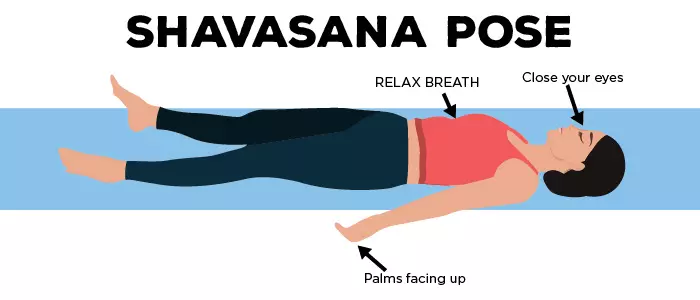
Level: Basic
Style: Ashtanga Yoga
Duration: 10 – 12 minutes
Repetitions: None
Strengths: Restores the body
How To Do Shavasana (Corpse Pose)
1. Lie flat on the floor, ensuring that there will be no disturbance for the duration of the pose. Make sure you are comfortable, but don’t use any pillows or cushions. It will be best if you lie on a hard surface.
2. Close your eyes.
3. Place your legs such that they are comfortably apart. Make sure your legs relax completely and your toes are facing sidewards.
4. Your arms must be placed along your body and slightly apart, leaving your palms open and facing upwards.
5. Now, slowly draw attention to every area of your body, starting from your toes. As you do this, breathe slowly, yet deeply, setting your body in a state of deep relaxation. Do not fall asleep in the process.
6. Breathe slowly, yet deeply. This will impart complete relaxation. As you breathe in, your body will be energized, and as you breathe out, your body will calm down. Focus on yourself and your body, forgetting all other tasks. Let go and surrender! But make sure you don’t doze off.
7. In about 10 to 12 minutes, when your body feels relaxed and refreshed, roll to one side, keeping your eyes closed. Stay in the position for a minute, until you sit up in Sukhasana.
8. Take a few deep breaths and gain awareness of your surroundings before you open your eyes again.
Precautions Or Contraindications Of Shavasana
This asana is absolutely safe and can be practiced by anyone and everyone. Unless your doctor has advised you not to lie on your back, you can practice this asana.
If you are pregnant, it might be a good idea to rest your head and chest on a bolster for comfort.
Beginner’s Tip
In our busy, stressful lives, it can be quite a task to completely let go and relax. The most difficult part about Shavasana is to release the heads of the thigh bones so that the groin softens. If the groin doesn’t soften, it could restrict proper breathing and, therefore, create tension throughout the body. To combat this, you could place five-kilo weights on your thighs, at the groin crease, and then imagine the heads of the thigh bone pressed down because of the weight.
Advanced Pose Alterations
1. If you experience tightness in your shoulders, chest, or back, your shoulders will not rest on the floor, and this will strain your neck. In this case, it is a good idea to slightly elevate your head and bring it to the same level as your neck. This will help soften the back of your neck. All you need to do is put a folded blanket under your head such that it ends at the top of your shoulders.
2. If the muscles of the lower back or hamstrings are tight, it might be a good idea to elevate your legs while you practice the corpse or savasana pose. This works well even when you have pain and discomfort in your lower back and hips. All you need to do is place a bolster right under your knees. If you don’t have a bolster at hand, you could stack up blankets and place them under your knees.
Benefits Of Shavasana (Corpse Pose)
This posture is one of the most important postures of yoga, and it has numerous benefits.
1. Brings The Body To A Meditative State
The body relaxes and goes into a deep meditative state, which in turn helps repair the cells and tissues and releases stress.
2. Relaxes And Calms The Body
Shavasana replenishes and rejuvenates your body. It is a great end to your workout, especially if it has been an intense one. The Savasana also gives space and time for the workout to sink in. It is a perfect buffer between exercise and your daily chores.
3. Reduces Blood Pressure And Anxiety
As your body relaxes and calms down, your blood pressure also drops, and this helps relax your heart. As a result, anxiety is in control.
4. Improves Concentration And Memory
The direct effect of meditation is focus and concentration. While you focus on each area of your body while you are in Shavasana, your mind automatically improves concentration and memory.
5. Increases Levels Of Energy
Savasana is the fastest and safest way to gain instant energy. The 10-minute break gives your body an energy boost, and thereby, increases your productivity.
The Science Behind Shavasana (Corpse Pose)
Shavasana allows ultimate relaxation of your body and mind, which is just as essential as exercise and a balanced diet are.
Subscribe
After a strenuous workout that involves stretching, twisting, contracting, and inverting of muscles, Shavasana allows your body to rest and regroup. Even the most neglected muscles will get some time to let go of their stress in such a short span of time.
Yoga furnishes the nervous system with a whole lot of neuromuscular information. Shavasana helps your nervous system integrate this information before your mind gets busy with the regular stress of the day.
Shavasana imparts deep awareness of your mind and body. You become extremely aware of each breath you take. Therefore, it is a great introduction to deep meditation for those who are interested in it.
Yoga is a ritual. It is meant to start with a warm up, followed by the practice itself, and end with a sort of integration phase for the effects of the exercise to seep into the mind and body. Shavasana helps achieve that. It is a perfect end to a satisfying workout.
Preparatory Poses
This asana should be done after you are done with all the active asanas and pranayamas.
Follow-up Poses
Follow up the Shavasana with the Sukhasana or the easy pose.
Shavasana or corpse pose resembles that of a dead body. This pose is usually performed after a heavy yoga session. It provides deep healing as well as deep relaxation. In such a short period, even the most neglected muscles will be able to release their stress. Shavasana benefits your neural system by integrating neuromuscular information before your mind becomes preoccupied with the daily stresses. Shavasana provides complete body and mind relaxation, which is equally important as exercise and a healthy diet. This asana also necessitates a high level of concentration.
Frequently Asked Questions
What are the disadvantages of Shavasana?
There are no such disadvantages of Shavasana. But this asana should be done in a calm environment. Also, you should not move the body while doing this asana.
Why do I cry during Savasana?
Crying during yoga sessions is normal. Certain yoga poses, like Savasana, may help you release your emotions, which may eventually cause you to tear up.
Related
The following two tabs change content below.
- Author

Shirin Mehdi
A jack of many trades and a master of some, Shirin is a writer, a fashion designer, and a chef… more



 7 Best Yoga Poses To Relieve Allergic Rhinitis
7 Best Yoga Poses To Relieve Allergic Rhinitis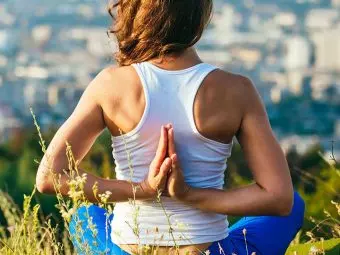 24 Effective Yoga Poses For Back Pain – Get Instant Relief
24 Effective Yoga Poses For Back Pain – Get Instant Relief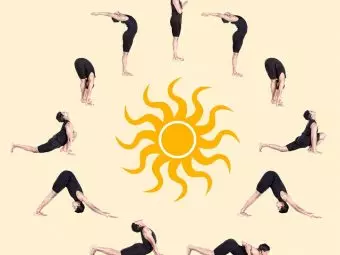 7 Yoga Poses For Beauty
7 Yoga Poses For Beauty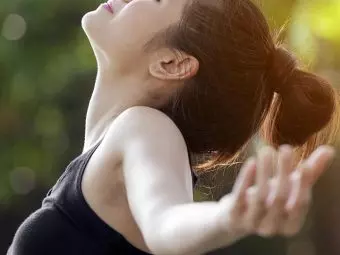 5 Deep Breathing Exercises Of Pranayama For Good Oxygen Levels
5 Deep Breathing Exercises Of Pranayama For Good Oxygen Levels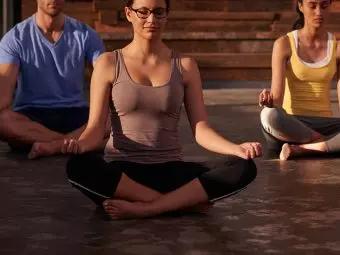 20 Things You Must Know Before You Start Practicing Yoga
20 Things You Must Know Before You Start Practicing Yoga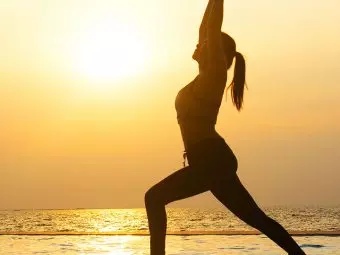 What Is The Best Time To Do Yoga?
What Is The Best Time To Do Yoga?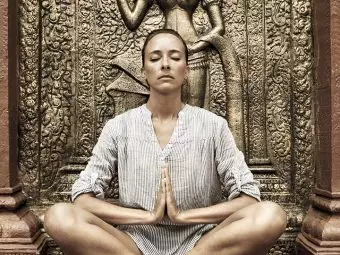 Reiki Meditation – How To Do And What Are Its Benefits?
Reiki Meditation – How To Do And What Are Its Benefits?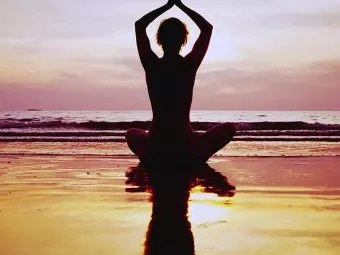 7 Easy Steps To Do Pranic Healing Meditation
7 Easy Steps To Do Pranic Healing Meditation 5 Effective Yoga Poses To Increase Your Stamina
5 Effective Yoga Poses To Increase Your Stamina